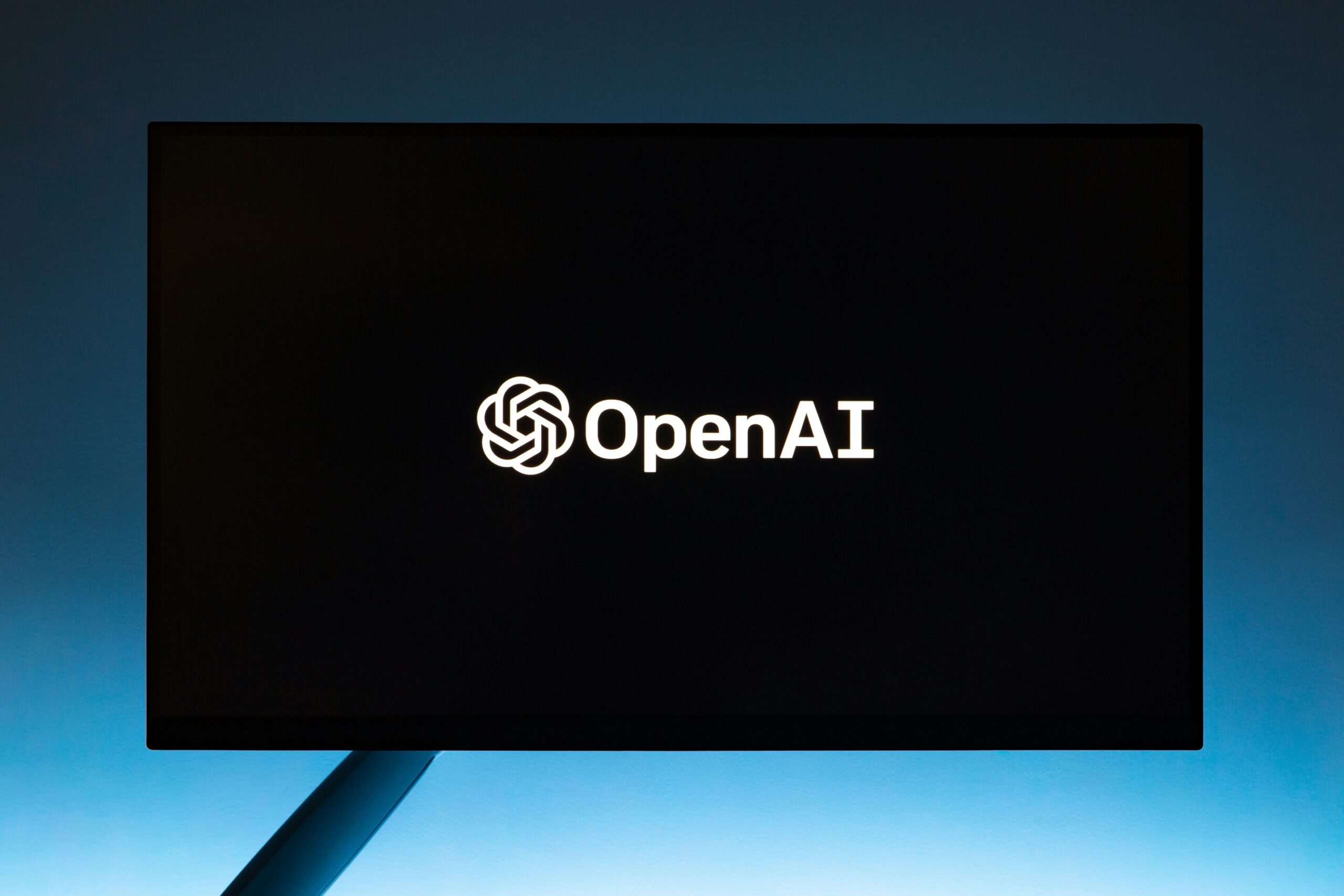Tech
OpenAI reaches new agreement with Microsoft to change its corporate structure

OpenAI has reached a new tentative agreement with Microsoft and said its nonprofit, which technically controls its business, will now be given a $100 billion equity stake in its for-profit corporation.
The maker of ChatGPT said it had reached a new nonbinding agreement with Microsoft, its longtime partner, “for the next phase of our partnership.”
The announcements on Thursday include a few details about these new arrangements. OpenAI’s proposed changes to its corporate structure have drawn the scrutiny of regulators, competitors and advocates concerned about the impacts of artificial intelligence.
OpenAI was founded as a nonprofit in 2015 and its nonprofit board has continued to control the for-profit subsidiary that now develops and sells its AI products. It’s not clear whether the $100 billion equity stake the nonprofit will get as part of this announcement represents a controlling stake in the business.
California Attorney General Rob Bonta said last week that his office was investigating OpenAI’s proposed restructuring of its finances and governance. His office said they could not comment on the new announcements but said they are “committed to protecting charitable assets for their intended purpose.”
Bonta and Delaware Attorney General Kathy Jennings also sent the company a letter expressing concerns about the safety of ChatGPT after meeting with OpenAI’s legal team earlier last week in Delaware, where OpenAI is incorporated.
“Together, we are particularly concerned with ensuring that the stated safety mission of OpenAI as a non-profit remains front and center,” Bonta said in a statement last week.
Microsoft invested its first $1 billion in OpenAI in 2019 and the two companies later formed an agreement that made Microsoft the exclusive provider of the computing power needed to build OpenAI’s technology. In turn, Microsoft heavily used the technology behind ChatGPT to enhance its own AI products.
The two companies announced on Jan. 21 that they were altering that agreement, enabling the smaller company to build its own computing capacity, “primarily for research and training of models.” That coincided with OpenAI’s announcements of a partnership with Oracle to build a massive new data center in Abilene, Texas.
But other parts of its agreements with Microsoft remained up in the air as the two companies appeared to veer further apart. Their Thursday joint statement said they were still “actively working to finalize contractual terms in a definitive agreement.” Both companies declined further comment.
OpenAI had given its nonprofit board of directors—whose members now include a former U.S. Treasury secretary—the responsibility of deciding when its AI systems have reached the point at which they “outperform humans at most economically valuable work,” a concept known as artificial general intelligence, or AGI.
Such an achievement, per its earlier agreements, would cut off Microsoft from the rights to commercialize such a system, since the terms “only apply to pre-AGI technology.”
OpenAI’s corporate structure and nonprofit mission are also the subject of a lawsuit brought by Elon Musk, who helped found the nonprofit research lab and provided initial funding. Musk’s suit seeks to stop OpenAI from taking control of the company away from its nonprofit and alleges it has betrayed its promise to develop AI for the benefit of humanity.
© 2025 The Associated Press. All rights reserved. This material may not be published, broadcast, rewritten or redistributed without permission.
Citation:
OpenAI reaches new agreement with Microsoft to change its corporate structure (2025, September 13)
retrieved 13 September 2025
from https://techxplore.com/news/2025-09-openai-agreement-microsoft-corporate.html
This document is subject to copyright. Apart from any fair dealing for the purpose of private study or research, no
part may be reproduced without the written permission. The content is provided for information purposes only.
Tech
I Wrote This While Trotting On a Dozen Different Walking Pads

Most Versatile
If you’re not keen on buying a standing desk, check out the Lifesmart 3-in-1 Treadmill. You can wheel the lightweight machine into any room, place the desk attachment across the handrail, and get to working and walking. The desk’s height won’t accommodate everyone—it was lower than I’d like, and I’m 5’4”. But for quick, basic work like answering emails or sitting in on a meeting, it got the job done just fine.
The 3-in-1 Treadmill gets its name from its ability to serve as a walking pad (with the rail down, the speed tops out at 3.7 mph), a treadmill (with the rail up, you can run up to 7.5 mph), and a workstation (with the rail up and desk attachment on).
It’s easy to set up, and transitioning between the walking pad, treadmill, and work modes is quick and simple (you just need to use a small tool to adjust the rail, which is magnetized so it can live on the rail and never get lost in a junk drawer). You can adjust the speed with buttons on the rails or with a Bluetooth remote, and a screen on the front of the machine cycles through your workout metrics. The sleek, modern design means you won’t be embarrassed to have it out in your living space. The only drawback is that it doesn’t have any incline options.
Quietest Pad
This walking pad had the most intuitive setup of any on this list (likely thanks to its lack of a companion app, which oftentimes isn’t really necessary). I was able to set it up in minutes, and the remote connected right away, no Bluetooth pairing required. Like many walking pads, this one has a screen at the front that shows you your workout metrics. If you pause the machine to step off, you can pick right back up where you started, building on those metrics until you turn the machine off. One downside: It doesn’t track steps.
The Auto Incline Walking Treadmill offers a great incline range, going up to a level nine, or 12-percent incline. It’s one of the highest incline capabilities I’ve found in my testing. You can walk up to 4 mph on this machine, and you can connect your phone to play music through the speakers. The remote allows you to take on 30-minute, preprogrammed walking workouts, too, where the machine auto-adjusts the speed throughout (though not the incline). Otherwise, you can use it in manual mode and adjust the settings to your liking.
Tech
It’s Not About the Bike: The Jackets and Lights to Keep You Cycling All Year Round

FAQs
We asked Joshua Hale, general manager of commuter bike specialists Quella, to answer all our questions on how to get your bike ready for winter and keep it running smoothly all year long.
How can cyclists stay visible to drivers without turning into a rolling Christmas tree?
It is not just the quantity of lights that’s important. Placement also makes a huge difference. A bright front and rear light are essential—ideally one steady and one flashing—to help you stand out without dazzling anyone on the road. Reflective details on moving parts like your jacket, ankles, or pedals also catch drivers’ eyes naturally. Good quality lights and reflective accents do a lot more than overloading on LEDs.
What’s the smartest way to layer clothing for warmth without overheating?
Layer clothing with breathability in mind. Start with a moisture-wicking base layer to keep sweat off your skin, add an insulating layer like a fleece or thermal jersey, and finish with a windproof or waterproof shell. You’ll warm up fast once you’re moving, so it’s better to start slightly cool. Zips and vents that can be opened on uphill climbs and closed on descents will come in handy. Other lightweight accessories such as gloves, a buff, and overshoes can also increase your comfort without adding bulk.
How can you adjust your tire size or pressure to ride safely on wet or icy roads?
In winter, opt for wider tires with a grippier tread—28 mm or more, if your bike allows it. The extra width increases contact with the road, giving better stability and traction. Lowering your pressure slightly (by around 10–15 psi) also improves grip on slippery surfaces without feeling sluggish. Avoid slick tires when it’s icy, and check your tires regularly, as wet roads pick up more glass and grit.
What are the easiest and most effective upgrades for commuters?
Mudguards are top of the list. They keep both you and your bike cleaner and drier. Good-quality lights with USB charging make daily use simpler, and winter-specific gloves can save your fingers on frosty mornings. Wider handlebars and padded bar tape also add comfort when the roads get rough. It’s all about small upgrades that make you want to keep riding, even when it’s cold and dark.
Why does your bike need more maintenance in the winter, and what quick maintenance tips can you suggest?
Winter is tough on bikes, with grit, salt, and moisture working their way into every moving part. Regular cleaning is the single best thing you can do, even if it’s just a quick rinse and wipe-down after wet rides. Keep your chain clean and lightly oiled, check brake pads more often, and make sure cables or hydraulic lines aren’t sticking. A few minutes of care each week prevents costly repairs later, and your bike will feel smoother and quieter every ride.
Tech
PlayStation Portal’s Latest Update Proves Sony Needs a Real Handheld Console Again

Another year, another update to Sony’s PlayStation Portal. The latest tweak to the hardware considerably expands the roster of games playable on the device—but the end result only highlights how urgently PlayStation needs to re-enter the gaming handheld market for real.
The evolution of PlayStation Portal has been fascinating to watch, mainly to see Sony practically scrambling to keep up with the gadget’s unexpected popularity. Launched November 2023, Portal was intended as a mere accessory for PlayStation 5. It had no native processing abilities, simply using Sony’s Remote Play technology to stream whatever happened on players’ personal PS5 to the portable’s screen.
Although it could technically be used anywhere with a strong Wi-Fi signal, difficulties connecting to public networks and high speed requirements to even launch a stream meant the Portal was effectively only suitable for in-home use, to free up the main TV or play in another room.
Somehow, it still took off, with Sony Interactive Entertainment CEO Hideaki Nishino saying in 2024 that the Portal had been a “huge success.” The same year, Sony made it easier to connect to public Wi-Fi and added actual cloud gaming support to Portal, with a selection of games on offer to players subscribing to PlayStation Plus Premium. The initial offering included “over 120 PS5 games from the PS Plus Game Catalog,” though the curated library was subject to change. It could have been a big shift in how players approached hardware and software alike, but, in practice, didn’t really deliver.
Even so, another year on and the Portal’s success seems unstoppable. Sony’s Takuro Fushimi recently told TechRadar that “the community’s response has been overwhelming” and that Portal is now the “most widely used device for PS5 Remote Play.” It’s little surprise, then, that Sony keeps trying to hammer it into something that looks, if you squint, like the standalone gaming handheld it was never intended to be, but that players so desperately want.
Clearer Skies?
Enter the newest update to PlayStation Portal. It takes Cloud Streaming out of its beta phase, expanding the streamable library from only those titles included in the PS Plus selection to many games digitally owned by players. Until now, if you didn’t have a game installed locally on your PS5 or it wasn’t included in that cloud catalog, too bad, no Portal play for you. Going forwards, you’ll be able to cloud stream many titles if they’re tied to your PlayStation account through purchase on the PlayStation Store—although you will still need to be subscribed at the PS Plus Premium tier to use the feature, which will set you back $160 for a full year.
The assortment available is already vast—more than 3,000 games at time of writing. On the face of it, this should be a transformative development for not just the Portal, but PlayStation as a gaming ecosystem. It potentially extends availability of titles you own to wherever you want to play them, and could even help alleviate data storage woes. Although the PS5’s internal drives can be expanded, SSDs can be pricey at higher capacities, and players with large digital collections often can’t install everything they own. Being able to stream games tied to your account without eating up drive space could be a great workaround.
The update also aims to improve the broader player experience on Portal. It finally adds the ability to make in-game purchases when cloud streaming (potentially useful if you want to buy some DLC or virtual currency), and allows players to receive game invites to multiplayer sessions when playing a game via the cloud. Previously, these features were only enabled for Remote Play gaming on Portal, since they were effectively being done through the PS5 and mirrored on the Portal’s screen. Accessibility features have also been improved, adding a screen reader tool and adjustable text sizes.
-

 Politics7 days ago
Politics7 days agoThailand launches air strikes against Cambodian military: army
-

 Politics7 days ago
Politics7 days agoZelenskiy says Ukraine’s peace talks with US constructive but not easy
-

 Fashion7 days ago
Fashion7 days agoGermany’s LuxExperience appoints Francis Belin as new CEO of Mytheresa
-

 Tech1 week ago
Tech1 week agoWIRED Roundup: DOGE Isn’t Dead, Facebook Dating Is Real, and Amazon’s AI Ambitions
-

 Politics1 week ago
Politics1 week ago17 found dead in migrant vessel off Crete: coastguard
-

 Politics4 days ago
Politics4 days agoTrump launches gold card programme for expedited visas with a $1m price tag
-

 Business4 days ago
Business4 days agoRivian turns to AI, autonomy to woo investors as EV sales stall
-

 Tech5 days ago
Tech5 days agoJennifer Lewis ScD ’91: “Can we make tissues that are made from you, for you?”




















